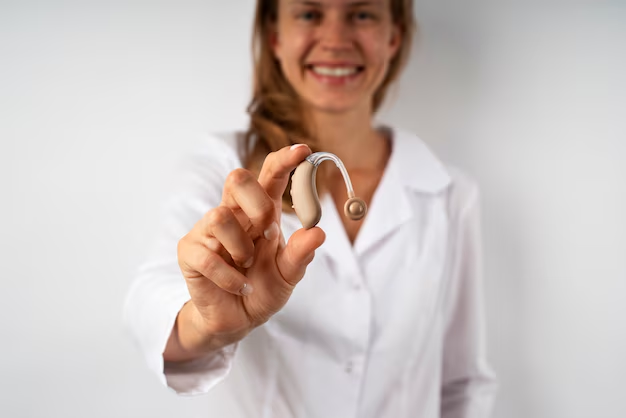Understanding Medicaid Coverage for Hearing Aids: What You Need to Know
Navigating the world of hearing aids can be challenging, especially when it comes to understanding what types of hearing aids are covered by Medicaid. Knowing the options available through Medicaid not only ensures better hearing care but also financial peace of mind. In this comprehensive guide, you'll learn about the specifics of Medicaid's coverage for hearing aids, eligibility criteria, and related insights to help you make informed decisions.
🎯 What is Medicaid?
Medicaid is a public health insurance program in the United States that provides medical coverage to low-income individuals and families. It is jointly funded by the federal and state governments, and its rules and coverage can vary significantly from one state to another.
Key Points:
- Purpose: Offers affordable healthcare to qualifying low-income individuals.
- Administration: State-run with federal guidelines.
- Variation: Each state has its own Medicaid program, resulting in different coverage plans and eligibility criteria.
🦻 Hearing Aids and Medicaid: What’s Covered?
Medicaid coverage for hearing aids is not uniform across all states. The extent to which hearing aids are covered depends on state policies. Here are some general trends:
🔍 State-by-State Differences
The coverage of hearing aids under Medicaid can vary greatly by state. Some states provide comprehensive coverage, including device costs, fittings, and follow-up visits. Others might offer limited or no coverage at all.
- States with Coverage: Some states include hearing aids as part of their required benefits, often offering coverage for hearing tests, device fittings, and necessary repairs.
- States with Limited Coverage: Other states may provide minimal coverage, focusing primarily on diagnostics or restricting coverage to children.
💡 Types of Hearing Aids Typically Covered
When Medicaid covers hearing aids, the types of devices you might expect to see included are:
- Behind-the-Ear (BTE) Aids: Popular for their versatility and power, often included in Medicaid-covered options.
- In-the-Ear (ITE) Aids: Custom-fit for the wearer, these can be partially or fully covered.
- Assistive Listening Devices (ALDs): Usually covered to assist in specific hearing circumstances.
Each state's program may have specific models or brands that qualify for coverage, often prioritizing basic models that meet general hearing needs without added features.
🏠 Understanding Eligibility for Hearing Aid Coverage
👥 Who Qualifies?
Eligibility for Medicaid's hearing aid coverage generally depends on income, age, and state-specific criteria:
- Income Requirements: Medicaid programs are income-based, with limits set by each state.
- Age Considerations: Some states prioritize children under specific programs like the Children's Health Insurance Program (CHIP).
- Medical Necessity: Often, coverage is extended based on the proven medical necessity of hearing aids, usually determined through audiologist assessment.
📄 Applying for Coverage
Applying for Medicaid coverage involves several steps:
- Initial Application: Submit financial information and any state-specific required documents.
- Medical Evaluation: Undergo hearing assessments with an approved provider.
- Authorization Process: Once deemed necessary, a prior authorization might be needed for specific hearing aid coverage.
📝 Helpful Tips for Navigating Medicaid Coverage
🌟 Key Takeaways
Here's a concise summary of practical tips for navigating Medicaid's hearing aid coverage:
- Research Your State: Check state-specific Medicaid programs for detailed hearing aide benefits.
- Consult Professionals: Work with audiologists who understand Medicaid processes.
- Prepare Documents: Keep financial and medical records organized for the application process.
- Check Device List: Some states provide a list of covered devices; ensure your needs align with it.
🛠️ Common Challenges and How to Overcome Them
- Waiting Periods: Approval times can vary. Staying informed about timelines and following up can expedite the process.
- Provider Limitations: Not all hearing professionals accept Medicaid. Verify providers within the Medicaid network beforehand.
🔄 Related Considerations: Beyond Basic Coverage
While understanding hearing aid coverage is essential, there are related aspects worth exploring:
🏥 Hearing Health Beyond Hearing Aids
Medicaid often covers additional hearing services, which can be as crucial as the devices themselves:
- Hearing Screenings: Regular tests may be covered, depending on state-specific schedules.
- Follow-Up Care: Some coverage includes continued monitoring and tuning of hearing aids.
📚 Educational and Community Resources
- Workshops and Support Groups: Many communities offer resources that can provide social and educational support for individuals with hearing loss.
- Research Organizations: Nonprofits often provide grants or financial assistance beyond Medicaid benefits.
🤔 Frequently Asked Questions
1. Are all hearing aids fully covered by Medicaid?
Coverage typically does not extend to all types of hearing aids or cover them fully unless medically necessary. Each state has different regulations about the extent of coverage.
2. Can I get high-tech hearing aids through Medicaid?
Generally, Medicaid covers basic hearing aid models. However, if a higher-tech option is deemed medically necessary, coverage may be possible with additional justification.
3. Do I need to requalify for Medicaid coverage periodically?
Yes, eligibility and coverage may need reevaluation periodically to ensure continued support.
🗓️ Looking Ahead: Staying Informed
Why It Matters: Understanding Medicaid's coverage for hearing aids can significantly impact your quality of life, especially in managing hearing loss effectively and affordably. Keep abreast of changes to Medicaid policies and state-specific regulations to make the most of your benefits.
Tip for the Future: Regularly check for updated policies within your state’s Medicaid program and work closely with healthcare professionals who can guide you through the nuances of coverage changes.
By understanding, navigating, and leveraging Medicaid’s support for hearing aids, you can ensure access to necessary auditory assistance and improve your overall hearing health. Stay informed, prepared, and proactive in reviewing your options to make the best choices for your hearing aid needs.

Related Topics
- a Plus Hearing Aid Centers
- a Real Pain Showtimes Near Centerville
- Are Airpods Bad For Your Ears
- Are Apple Second Generation Airpods Hearing Aids
- Are Audien Hearing Aids Just Amplifiers
- Are Costco Hearing Aids As Good As Others
- Are Costco Hearing Aids Good
- Are Hearing Aid Domes Interchangeable
- Are Hearing Aid Subscriptions Worth It
- Are Hearing Aid Tax Deductible